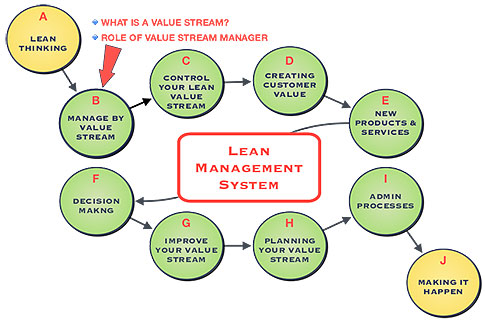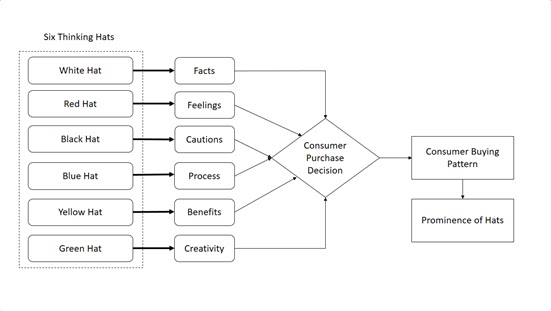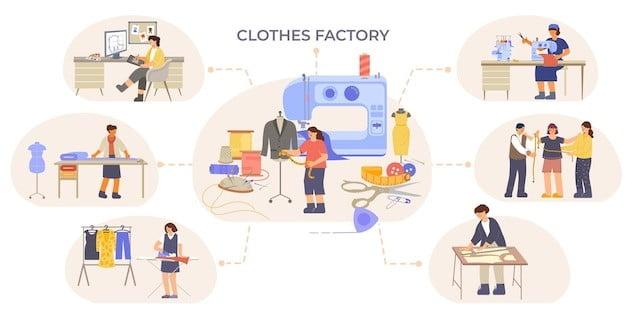Maintaining a customer focus is one of the most important elements in today’s business market. Other elements such as money, resources and labour are clearly important in spite of the combination of all these. The wheels of an organization cannot move if the customers are not satisfied. Organizations have realized that survival is only possible through customer satisfaction, and satisfaction will come through quality goods and services with the lowest possible prices. In today’s competitive and changing business world lean production philosophy has brought changes in management practices to improve customer satisfaction as well as organizational effectiveness and efficiency. Simply lean is to create more value for customers with fewer resources.
According to Womack, “Lean would replace mass and craft production in all industrial sectors and will become the global standard for the production system of 21st century.” (The Machine That Changed the World, 1990).
A Mckinsey and Co report suggests that 86 percent of the chief purchasing officers in their survey wanted to move out of china, and Bangladesh is their next destination. Bangladesh has a lot of potential market. But, Could Bangladesh satisfy the customers demand? For sustain in the global market place, having a better business strategy is unquestionable need. At present very few industry in Bangladesh has implemented lean but how much they succeeded it’s not clear enough. Lean is a culture, not a simple system to impose on. Lean is a journey of five steps – define value, value stream mapping, create flow, pull and seek perfection.
Value stream mapping is a powerful tool in Lean principles were first used at Toyota Motor Company, which likely to surpass General Motors as the world’s largest automobile manufacturer in 2007 (Naughton & Sloan, 2007). However, the textile industry has been slow to adopt lean manufacturing principles or waste management tools. For these textile companies, lean manufacturing may not seem useful in their environment, or they may simply not want to change the way they operate. In the global marketplace, textile companies will find that a growing number of their downstream customers and their competitors are operating under lean principles. With this increased competition, customers have a growing variety of better products with fewer defects at lower prices to choose from offered at a variety by of sales channels (Womack & Jones, 2005).
1. Potential Benefit of the VSM:
There are several possible benefits from the VSM from the standpoint of textile companies such as reduction in cost, lead time, inventory, and better utilization of production space. Other industries which have used lean manufacturing strategies have experienced improvements in operational performance through eliminating waste and non-value-added steps, which provided these companies with cost saving and shortened lead times (Aberdeen Group, 2006). These benefits are particularly interesting for textile companies as the industry faces increased global competition. And value stream mapping is the starting point of that journey.
VSM means working on the big picture not on the individual processes and improving the whole flow but not just optimizing the process, which facilities more thoughtful decisions to value stream mapping. VSM is prescribed as part of the lean toolkit and has been applied in a variety of industries.
2. Lean Manufacturing:
Lean manufacturing is a set of tools and methodologies that aims for the continuous elimination of all waste in the production process which is a system for improving productivity and product quality. Lean thinking provides a way to specify value, line up the value creating options in the best, conduct these activities without interruption whenever someone request them and perform them more effectively. In short lean is a way to provide a way to do more and more with less and less – less human effort, less equipment, less time, less space.
So, we can say – “Lean is a systematic approach to identify and eliminating waste (Non-value-added activities) through continuous improvement by flowing the products at the pull of the customers in pursuit of perfection’’
3. Process in Lean Manufacturing:
3.1. Lean is a combination of simple 5 steps-
- Identify and understand what creates value for the customer: By accepting that only a fraction of the total time and effort expended in the organization actually adds value for the customer; understanding what the customer wants is the first step towards identifying all the non-value-added activities or waste within the organization.
- Identify, understand and map all the process steps required to fulfil the customer: By documenting the entire set of activities across all parts of the organization involved in delivering products or services to the customer allows for an understanding how value is delivered to the customer in the current state makes it possible to identify the wasteful activities that can then be targeted for elimination.
- Make the value-added actions within processes flow: Flow is about creating value for the customer with the minimum number of process steps with the minimum number of delays between those process steps and the minimum number diversions along the way. The value stream is used to identify wasteful activities to be eliminated; flow concerns the rethinking or reorganization of the remaining activities to further eliminate waste.
- Only make what the customer wants or Pull: If one objective for creating flow within processes is to minimize their through put time. A clear second is to ensure that processes are only initiated when customer demand requires it. Essentially, this may mean only making products or delivering services at the point the customer demands; just-in-time. As such as many process steps in the value stream should be triggered when there is a firm customer requirement.
- Pursue Perfection through Continuous Improvement: Creating flow and pull begins with often radical changes to individual process steps, but the gains delivered by Lean principles really become significant as they are applied with increasing scrutiny. As this happens more and more layers of waste become visible and the cycle continues towards a theoretical end point of perfection; where every asset and every action adds value for the customer. Through continuous improvement the organization should strive for incremental improvements in the value stream every single day.
4. Muda or Seven Deadly Wastes:
Any work or activity we do can be classified into one of the three categories:
1. Value-Added Work
2. Non-Value-Added Work
3. Waste or Muda
Value added work is that which customer is willing to pay for it, the “thing” must physically change and the work must be done right first time. Non-value-added activity is that activity which adds no value but it is needed to satisfy customer need. Waste is that for what customer is not willing to pay for it. Traditionally, many organizations attempt to reduce the lead-time or performance of their value stream by removing waste from their value-added processes. And while this isn’t necessarily a bad thing, there is far more opportunity in attacking waste or Muda.
The seven deadly wastes are:
- Defect
- Inventory
- Processing
- Waiting
- Motion
- Transportation
- Overproduction
👉Defect is simply work that is less than the level the customer – both internal and external – has requested. Some examples of defects are rework, scrap, missing parts, wrong parts, and yield loss at start-up. As a point of reference, the waste of defects is also sometimes referred to as the waste of correction.
👉Inventory is any material or work on hand other than what’s needed right now to satisfy customer demand. Some examples of inventory waste are excess raw materials, work in process, finished goods, supplies, and spare parts. In an upcoming module we’ll spend more time exploring the different types of inventory we might have on hand such as cycle stock, buffer stock, and safety stock.
👉Processing: Next, we experience the waste of processing, sometimes called over processing, when something’s designed in such a way that uses more resources, such as space, energy, or people, than is truly required… sort of like using a sledgehammer to smash a peanut. The waste of processing is definitely the hardest to understand and learn to see since the most common root causes are a lack of understanding of customer needs. Some examples of processing waste are machines that are slower or faster than needed, equipment that uses more energy than needed, redundant work such as copying information, drilling a hole instead of punching it, and cleaning something multiple times.
👉Waiting: Anytime there’s idle time created because materials, machines, inspection or information are not ready for people we have the waste of waiting. This waste is usually less visible than the others because it’s often replaced by overproduction or busy work. So, in fact, when waiting becomes visible, it’s important to keep people from working just to ‘keep busy’ since this busy work often does more harm than good. Some examples of waiting are people waiting for materials, an accountant waiting for information to close the monthly books, warehouse employees waiting on a forklift, or a nurse waiting on important supplies to arrive.
👉Motion: Any movement of people that doesn’t add value to the product creates the waste of motion. By nature, most motion is in fact wasted. Consequently, by closely studying motion and the time it takes to do a task, it’s often possible to improve manual operation times by 30% to 50%. In addition, eliminating motion waste is a key part of reducing changeover times. Some examples of motion are walking, reaching, searching, lifting, choosing, arranging, and turning.
👉Transportation: The next waste, which is often confused with the waste of motion, is transportation, which is the movement of materials that adds no value to the product. Another way of saying it is transportation is the movement of material using carts, trucks, forklifts, or simply your arms and legs. It should also be said that while moving product on a conveyor is not as bad as moving material from one disconnected process to another it’s still conveyance, a type of transportation waste since conveyors are inflexible and require space and energy. Some examples of transportation waste are moving finished goods to storage, moving work in process to the next step, moving between functional areas, moving parts to the line, and moving items to Quality Assurance.
👉 Overproduction: Finally, but more certainly not least, we come to what lean practitioners commonly refer to as the mother of all wastes – overproduction – which occurs when we make more products than the customer needs right now. The reason we say overproduction is the mother of all wastes is because it often leads to all the other wastes in one form or another. For example, overproduction multiplies the other wastes such as inventory and covers up problems such as waiting or variability in demand, and it makes it harder to understand our true capacity. Some examples of overproduction are making extra parts to cover for scrap, forecast production, economic order quantity lot sizes, piece rate production, and production done simply to maximize utilization or absorption.
5. Lean Tools and Methods:
The objective of lean is to create the most value for the customer while consuming the least amount of resources to design, build, and sustain the product. Companies will gain improvements from lean when they redesign their value streams by applying the following principles:
- Specify value from the standpoint of the customer
- Identify the value stream for each product or service-line family
- Make value flow toward the customer
- Produced based on the pull of the customer, and
- Strive continually to approach perfection.
The objective of these lean principles is to create the best possible system, from concept to consumer using the current financial and resource constraints to provide the most value to the customer. Once the value stream is designed, or redesigned, improvements can be made by implementing lean tools and techniques appropriate to the particular situation (Womack & Jones, 1996).
6. Value Stream Mapping (VSM):
Value stream mapping is a powerful tool in Lean thinking. Nowadays it is also been used in six sigma concepts. Formally defined, a value stream is all the steps, both VA and NVA, required to take a product or service from raw material to the waiting arms of the customer. Value stream is the set of all specific actions to bring a product to the end users through three critical measurement tasks of any business-
1. Problem solving task is the task to run from concept through detailed design and engineering to production launch.
2. Information management task is to run from order taking through detailed scheduling to delivery.
3. Physical transformation task is to proceed from raw materials to a finished product in the hands of the customer.
Value Stream Mapping is a visual tool that helps us document all the activities required to receive and fulfil a request from our customer. It helps people see what is really happening in the process through direct observation. Value Steam Mapping isn’t an activity you do in your office or a conference room but as close to the actual process as possible so you can see the current state of the process and collect actual data. Value stream mapping helps to overall flow of material and information across the entire process visible to people who normally manage individual functions, processes and departments. Finally value stream mapping is a dynamic document that tends to continuously updated as processes are improved.
6.1. Comparison between Value Stream Map and Traditional Process Map:
Well there are similarities in value stream map (VSM) and traditional process map. There are some major differences. Perhaps some striking difference is in fact that value stream mapping (VSM) shows both the material and information flow. But most process map do a decent job on the material flow side of things; but they completely leave out the information side of things.
6.2. Types of Value Stream Mapping:
Generally speaking there are three main types of value stream maps. The first we call the process level VSM. With this map we are interested in the material and the information flow within a particular cell of a production line. Next, we come to the factory level VSM. It is also called the “door to door” VSM. Here we are looking the material & information flow within the four walls of a factory. And finally, we come to ‘extended’ or ‘enterprise’ VSM which focuses on the material and information flow across a several company. Now we say normally to start from the ‘factory’ or ‘door to door’ value stream mapping (VSM).
6.3. Benefits of Value Steam Mapping:
Value stream mapping helps to visualize the overall process, not just a single process; it helps to see a holistic view of the things really work. It also allows seeing things from the customer perspective. It includes the customer those are willing to pay us as well as the external customers who also depend on us. Value stream mapping allows us to see wastes in the process like never before. We sometimes refer to these as learning to see. Mike Rother in his book “Learning to see” said – “Whenever there is product for a customer, there is a value stream, and the challenge lies in seeing it”. You can’t see the whole and so you can’t see the holes. VSM also allows us to visualize that links the material and information flow. Value stream map bring alignment to the organizations that provides a blueprint for improving implementations while allowing the people who actually do the work. And finally VSM helps to focus, its not product focus, its actually helps to process focus.
Texpedi.com
Check out these related articles:







